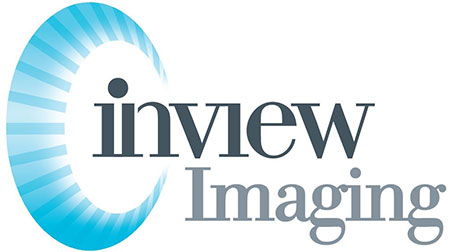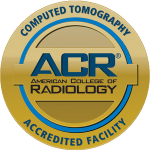Did you know that 1 in 8 women in the United States will develop breast cancer in her lifetime? Understanding how often you should have a mammogram is crucial for early detection and effective treatment. Regular mammograms can detect breast cancer at an early stage when it’s most treatable. By knowing the recommended frequency for mammograms from the national comprehensive cancer network, you can take proactive steps towards your breast health and overall well-being.
Key Takeaways
-
Regular mammograms are crucial: Make sure to schedule regular mammograms as they are essential for early detection of breast cancer.
-
Stay informed about guidelines: Stay updated on the latest guidelines regarding mammogram frequency, clinical breast exams, breast changes, and breast self, as they may change over time based on new research and recommendations.
-
Consult your healthcare provider or doctor: Discuss your individual risk factors, concerns, and clinical breast exams with your healthcare provider to determine the best mammogram schedule for you each year.
-
Consider personalized screening plans: Personalized screening plans based on your risk factors and medical history may be more beneficial than a one-size-fits-all approach.
-
Empower yourself with knowledge: Educate yourself about breast cancer screening options beyond mammograms to make informed decisions about your health.
-
Early detection saves lives: Remember, early detection through regular mammograms can significantly increase the chances of successful treatment and survival.
Understanding Mammograms

Importance for Women
Mammograms play a crucial role in women’s health by detecting breast cancer early, leading to better treatment outcomes. Regular screenings empower women to take control of their breast health and make informed decisions. Early detection through mammograms significantly improves the chances of successful treatment for breast cancer.
Benefits of Early Screening
Early mammogram screenings offer several advantages, including increased treatment options and higher survival rates. Detecting breast cancer at an early stage allows for less aggressive treatments and better overall outcomes. Early screening also contributes to reducing mortality rates associated with breast cancer.
New Guidelines Overview
Recommended Frequency
Regular mammogram screenings are essential for detecting breast cancer early. Following recommended intervals improves the chances of successful treatment. Screening frequency significantly impacts health outcomes by catching cancer at more treatable stages.
-
Pros: Early detection, improved treatment outcomes
-
Cons: Possible false positives, radiation exposure risks
Screening at the right intervals ensures any abnormalities are promptly identified. It is crucial to adhere to these guidelines to enhance the effectiveness of screenings.
Age to Start Screening
Commencing mammogram screenings at specific ages is vital for women at average risk. The recommended age considers various factors, including family history and genetic predispositions. Personalized screening plans based on individual risk profiles help determine when to start screening.
-
Women aged 40-44: Consider starting discussions about mammograms.
-
Women aged 45-54: Begin annual mammograms.
-
Women aged 55 and older: Continue with yearly or biennial screenings.
Starting screenings at the appropriate age allows for timely detection and treatment if needed. Understanding when to begin screening based on age and risk factors is crucial for maintaining breast health.
Behind the Guidelines
Evidence and Data
Studies indicate that regular mammograms significantly reduce breast cancer mortality rates. The American Cancer Society recommends annual screenings for women aged 45-54, then biennially after 55.
Research shows that early detection through mammography leads to more treatment options and better survival rates. Screening guidelines are based on statistical analysis of screening benefits versus potential harms.
-
Mammograms have been proven to detect cancerous growths at an earlier, more treatable stage.
-
Data suggests that routine screenings can decrease the risk of advanced cancer development.
The establishment of screening guidelines relies heavily on evidence-based practices, ensuring recommendations are rooted in scientific research. By analyzing large-scale data sets, experts determine the most effective screening intervals.
Rationale for Changes
Recent updates in mammogram screening recommendations aim to enhance screening accuracy and outcomes while minimizing unnecessary procedures. Changes often reflect advancements in technology and medical knowledge.
New guidelines seek to address concerns such as over-diagnosis and false positives, aiming to strike a balance between early detection and reducing patient anxiety. The shift towards individualized screening plans considers factors like family history and genetic predispositions.
-
Evolving technologies like digital mammography offer improved resolution, leading to more accurate results.
-
Controversies may arise due to differing opinions on the optimal age to begin regular mammogram screenings.
Changes in screening protocols spark debates within the medical community regarding the ideal balance between early detection and minimizing harm from unnecessary procedures. While some advocate for starting screenings at an earlier age for higher-risk individuals, others argue for a more conservative approach based on evidence-based research.
Screening Debate
Different Perspectives
Experts and organizations debate the appropriate time to start mammogram screenings. Some recommend starting at 40, while others suggest 50. The American Cancer Society advises starting at 45, then annually from 55.
Organizations like the U.S. Preventive Services Task Force suggest biennial mammograms for women aged 50-74. However, the American College of Radiology recommends yearly screenings starting at age 40. These varying recommendations can create confusion for individuals seeking guidance.
Considering diverse opinions is crucial when deciding on mammogram screening frequency. While some emphasize early detection, others stress minimizing unnecessary procedures and radiation exposure. Understanding these perspectives helps individuals make informed decisions about their health.
Factors Influencing Recommendations
Mammogram screening guidelines are influenced by several key factors. Risk factors such as family history and genetic predisposition play a significant role in determining when to begin screenings. Research findings on the effectiveness of early detection also impact guidelines.
Technological advancements, such as 3D mammography, have improved the accuracy of screenings and detection rates. These advancements influence recommendations on the frequency of screenings and the age at which they should commence. Balancing these variables is crucial in developing effective screening protocols.
Following New Recommendations
When to Start
Starting mammogram screenings at age 40 is optimal for women at average risk of breast cancer. Considerations such as family history and personal health play a role in deciding when to begin screenings. Early detection through mammograms significantly improves breast cancer outcomes.
Women with a strong family history of breast cancer or those at high risk may need to start screenings earlier than age 40. The Task Force recommendations provide guidance on when to begin based on individual risk factors. Early screening can lead to positive results in detecting breast cancer at an early, more treatable stage.
Screening Interval
Adhering to the recommended screening intervals for mammograms is crucial for early detection. The frequency of screenings directly impacts how effectively breast cancer can be detected early. Consistent screening intervals are essential in reducing breast cancer mortality rates.
Regular screenings help identify any changes in the breast tissue over time, allowing for prompt intervention if necessary. Women who undergo mammograms at the recommended intervals have a higher chance of detecting breast cancer in its early stages. This proactive approach can lead to more positive outcomes and improved survival rates.
Beyond Mammograms
Additional Preventive Steps
Supplementary Preventive Measures:
-
Engage in regular physical activity to maintain a healthy weight and reduce breast cancer risk.
-
Maintain a balanced diet rich in fruits, vegetables, and whole grains for optimal breast health.
Lifestyle Choices for Risk Reduction:
-
Limit alcohol consumption as excessive intake can increase the chances of developing breast cancer.
-
Avoid smoking and exposure to secondhand smoke to protect overall health and minimize cancer risks.
Comprehensive Approach Importance:
-
Combining mammogram screenings with self-exams enhances early detection capabilities.
-
Regular clinical breast exams by healthcare professionals provide additional layers of preventive care.
Comprehensive Breast Health
Holistic Breast Health Advocacy:
-
Self-exams empower individuals to monitor changes in their breasts between medical appointments.
-
Genetic counseling aids in understanding hereditary risks and guides personalized prevention strategies.
Role of Early Detection:
-
Early detection through various methods increases treatment success rates and survival outcomes.
-
Proactive management based on risk assessment ensures tailored interventions for optimal health outcomes.
Closing Thoughts
Now that you have delved into the world of mammograms, the new guidelines, and the ongoing screening debate, it’s crucial to consider your health decisions thoughtfully. Understanding the recommendations and their implications can empower you to make informed choices about your well-being. Remember, your health is in your hands.
As you navigate the realm of mammograms and screening guidelines, stay proactive about your health. Discuss any concerns or questions with your healthcare provider, ensuring that you are on the right path for your individual needs. Your well-being is paramount, so take charge and advocate for yourself when it comes to screenings and preventive care.
Frequently Asked Questions
How often should I have a mammogram?
Mammogram frequency depends on age and risk factors. Generally, guidelines recommend starting at age 40 annually or biennially. Discuss with your healthcare provider to determine the best schedule for you.
What are mammograms used for?
Mammograms are X-ray screenings that detect breast cancer early, even before symptoms appear. Early detection increases treatment success rates and improves survival chances.
Are there risks associated with mammograms?
While mammograms involve low radiation levels, the benefits of early cancer detection usually outweigh the risks. Some discomfort during the procedure is common but temporary.
Can mammograms detect all types of breast cancer?
Mammograms may not detect all breast cancers, especially in dense breast tissue. Additional tests like ultrasounds or MRIs might be recommended based on individual risk factors.
What happens during a mammogram?
During a mammogram, each breast is compressed briefly between two plates to create X-ray images. The process is uncomfortable but quick, lasting only a few minutes per breast.


